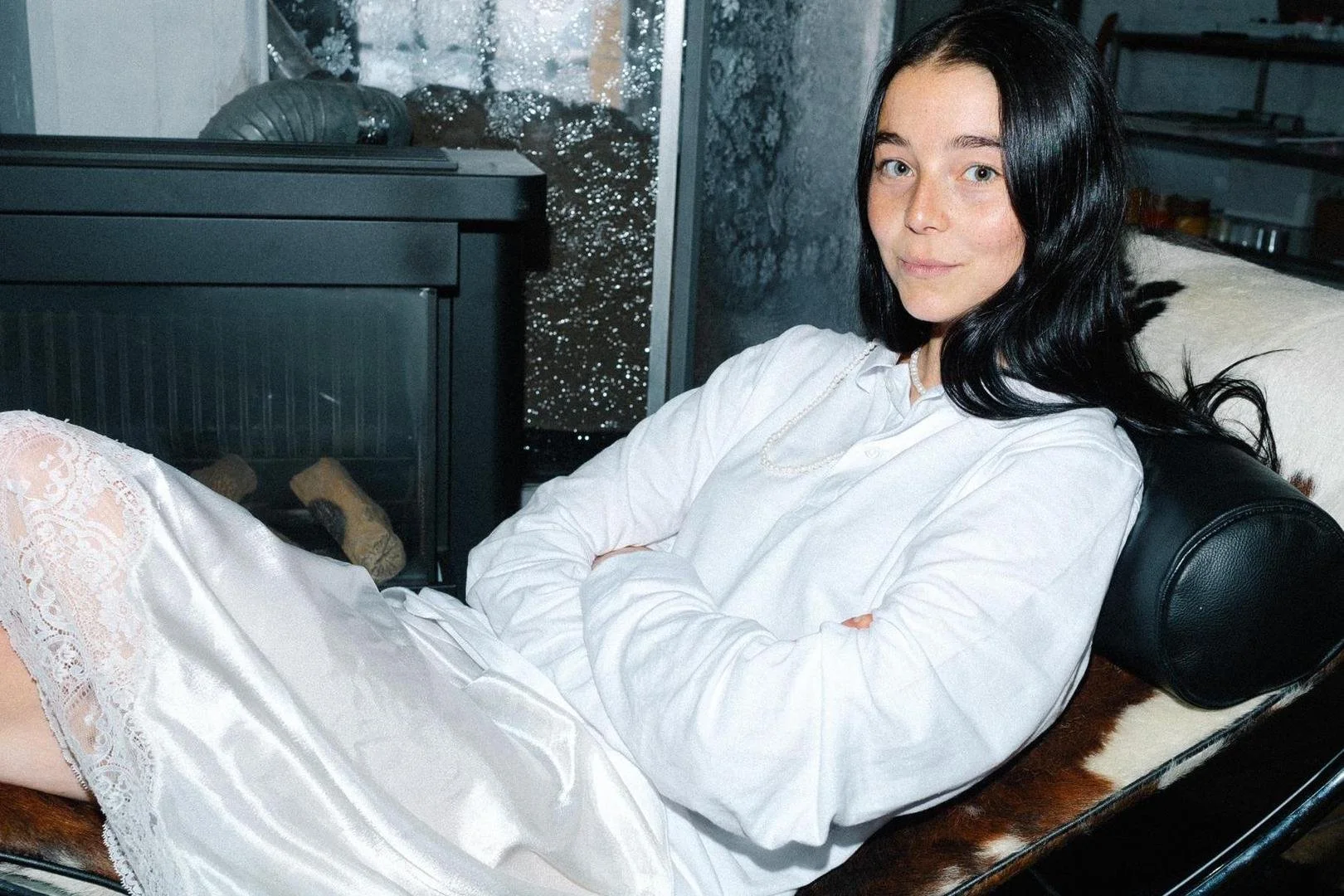Julie Kegels: From Antwerp to Alaïa
How a quiet force from Antwerp redefines femininity at one of fashion’s most legendary houses.
Courtesy of Tom Delaisse via De Standaard
Julie Kegels entered quietly into a fashion world that often moves fast and shouts. There was no front-page frenzy, no viral moment, just presence, precision, and a body of work that speaks in volumes even when it whispers.
Now part of the design studio at Alaïa, the legendary Parisian house built on sculpted sensuality, Kegels is helping to define a new chapter. One that looks back at the brand’s deep heritage while offering something distinctly forward, a fusion of Belgian conceptualism and Parisian allure.
If Alaïa has always celebrated the curve, Kegels understands how to draw it differently with restraint, intelligence, and the subtlety that comes from a mind trained in beauty and structure.
Where Art Meets Technique: The Antwerp Foundation
Julie Kegels studied at the Royal Academy of Fine Arts in Antwerp, one of fashion’s mythical schools. It’s where the greats honed their eye, all architects of modern fashion. The Academy isn’t known for creating trends. It’s known for creating thinkers.
There, students are challenged to approach clothing as art, an object, and a statement. For Kegels, that education became the foundation for her language: a style of dressing that favors clean lines, sculptural forms, and a dialogue between body and garment.
Her graduate work leaned into anatomy without being literal. You could see how structure became second skin, how every fold and seam revealed a sensitivity to movement, stillness, and everything in between. In a school known for conceptual rigor, Kegels stood out for her ability to ground big ideas in wearability. Even in her earliest pieces, the fingerprints of Belgian minimalism were there: clothes that didn’t need to perform, but rather exist with clarity and depth.
Courtesy of Sanne de Wilde via Weekend Knack
Carving Identity Within a Legacy: Her Role at Alaïa
Alaïa is not an easy house to walk into. Its founder, Azzedine Alaïa, was a master of form, a designer who treated fabric like sculpture and women like muses, not mannequins. When Pieter Mulier took over creative direction in 2021, the question wasn’t just how the brand would move forward, but who would shape that future.
Julie Kegels joined the Alaïa team during this transition. Her arrival didn’t come with big press releases; it went through the work; in the folds of a dramatic knit, in the elegance of an open back, and in the weight of materials chosen not for trend but for how they move, cling, or release.
She isn't just echoing Alaïa’s aesthetic; she’s adding nuance. She brings the analytical calm of Antwerp to a house known for seduction. Where Alaïa once celebrated the body's power, Kegels brings an element of introspection. Less provocation, more presence. You can see her hand in how garments now balance tension and tenderness, how silhouettes seem strong and still, and how desire is suggested but not declared.
Quiet Power, Sculpted Grace: The Design Philosophy of Julie Kegels
Julie Kegels doesn’t design for noise. She designs for meaning. Her philosophy sits in the space between the garment and the body where fabric becomes language, and clothing becomes a form of quiet communication.
Her love of sculptural form isn’t just visual; it’s emotional. She approaches the female body with careful intimacy, not as a site of decoration but of collaboration. Her work doesn’t impose itself on the wearer; it responds to them.
In a moment when fashion often chases virality, her commitment to restraint feels radical. She resists the impulse to overstimulate. Her garments pause. They breathe.
That restraint isn’t cold; it’s considered. Whether it’s a hand-finished seam, a draped shoulder, or a monochrome palette that shifts subtly in light, every decision feels deliberate. Her work suggests that power in fashion doesn't have to be loud to be felt. It can be whispered. And still hold you.
Courtesy of Julie Kegels via Vogue
The New Guard of Intuition and Intellect: Why She Matters Now
Post-pandemic, the fashion world is rethinking speed, spectacle, and surface. The hunger for fast fashion, maximalism, and endless reinvention is giving way to something slower, more thoughtful. In this shift, designers like Julie Kegels matter more than ever.
She belongs to a generation redefining what it means to make clothes; not just beautiful things, but pieces that respect the body, the craft, and the environment they live in.
Julie shares space with designers like Nensi Dojaka, Rui Zhou, and S.S. Daley, all of whom carefully explore structure, intimacy, and identity. However, what sets Kegels apart is her ability to exist within a historic brand while still pushing its boundaries. She doesn’t erase Alaïa’s past. She studies it. Then, she rewrites it in her rhythm.
In an industry long dominated by spectacle and hierarchy, Kegels represents a quieter kind of strength that young designers, especially women, increasingly embrace: power through precision, not excess.
The Future from Antwerp to Paris
Julie Kegels may not be the loudest voice in fashion right now, but she doesn’t need to be. Her work speaks clearly and carries. In a house built on discipline and desire, Kegels is learning how to write the next chapter not with a scream but with a gesture, a shape, a seam.
She brings the legacy of Antwerp’s intellect, the restraint of Belgian design, and the sensual heritage of Alaïa, weaving them into something that doesn’t just dress the body, but respects it.
If Alaïa is a house of discipline and desire, Julie Kegels is learning to write its next chapter one curve, one seam, one silence at a time.
Exploring the rise of Julie Kegels and the quiet revolution she's stitching into fashion’s future.





